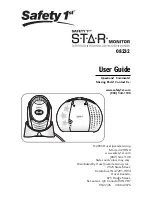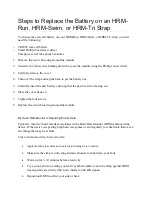
Communication Options
3.5 Communication between F-CPU and F-I/O
Safety Engineering in SIMATIC S7
3-6
System Manual, 04/2006, A5E00109529-05
3.5
3.5
Communication between F-CPU and F-I/O
Introduction
Both safety-related communication and - depending of the F-I/O used - standard
communication can take place between the F-CPU and F-I/O. This section describes these
two communication types.
3.5.1
Safety-Related Communication
Communication Overview
)&38
6DIHW\SURJUDP
6DIHW\UHODWHG
),2
Figure 3-4
Safety-Related Communication between F-CPU and F-I/O
Differences in the F-I/O Connection between S7 Distributed Safety and S7 F/FH Systems
Connection of F-I/O differs in the two F-systems with respect to integration in the safety
program and the associated user actions:
In S7 Distributed Safety, safety-related communication takes place the same as in standard
automation systems via the process image (PII and PIQ). The I/O cannot be accessed
directly.
The process input image is updated at the beginning of the F-runtime group, before the F-
program block is executed. The process output image is updated at the end of the F-runtime
group, after the F-program block is executed.
The actual communication between the F-CPU (process image) and the F-I/O to update the
process image occurs in the background using a special safety protocol in accordance with
PROFIsafe.
In S7 F/FH Systems, safety-related communication takes place via inputs and outputs of F-
driver blocks. The user must position and interconnect special F-driver blocks in the CFC
charts of the F-runtime group.
Variables for F-I/O communication are made available to both F-systems for evaluation by
the user. The difference lies in how the variables are made available. In S7 Distributed
Safety, variables are provided in F-I/O DBs, while in S7 F/FH systems, variables are
provided as inputs and outputs of F-driver blocks.
See also
Structure of the Safety Program in S7 Distributed Safety (Page 7-4)
















































